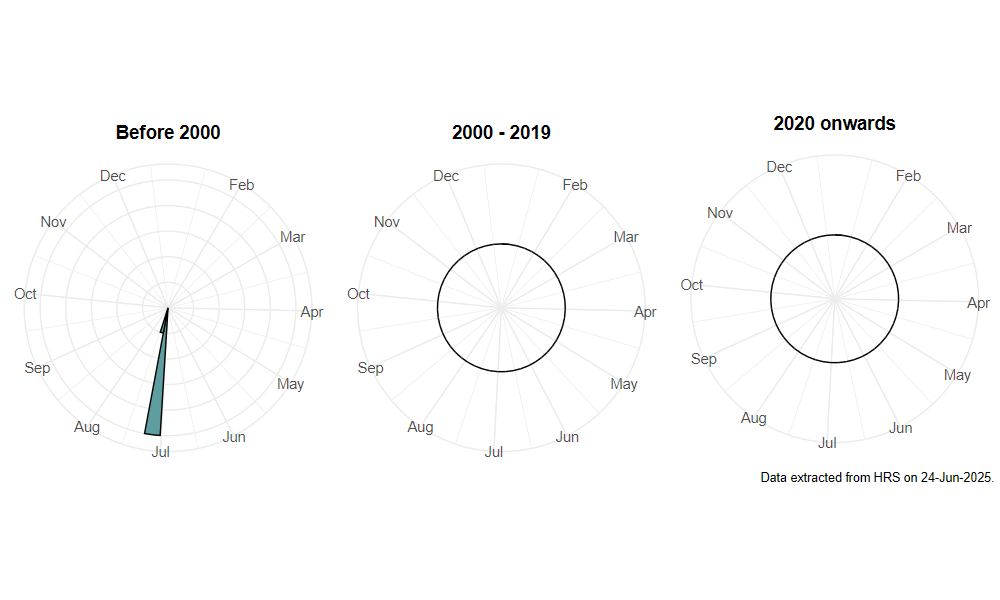Helophilus groenlandicus (Fabricius, 1780)
Identification
Identification difficulty = 5. ![]()
![]() according to Ball & Morris, 20241
according to Ball & Morris, 20241
Biology
This would appear to be a boreal species that is confined to low-lying wetlands on or near the coast (in Scotland). Elsewhere it is a widely distributed Holarctic species. The larvae of this genus are 'long-tailed', a modification that allows the animal to breathe whilst living entirely submerged. As yet, the larva has not been found or described so very little is known of their ecology, but an association with boggy pools on or near the coast appears to be consistent with the known distribution of H. groenlandicus. The adults are flower visitors and are reported pollinators of Primula laurentiana in North America.
Flight period
The following plots show the number of unique records per week excluding those reported to be of immature stages.

Status
DATA DEFICIENT - Ball & Morris, 20142. Vulnerable (RDB2) - Falk, 19913. Rare (RDB3) - Shirt, 19874.
Distribution
All of the known records are from the North-west coast of Scotland and the inner Hebrides. Rotheray & Gilbert (2011)5 suggest that it may be a vagrant to the west coast of Scotland from further north.

-
Ball, S., & Morris, R. (2024). Hoverflies of Britain and Ireland. WILDGuides (3rd ed.). Oxford: Princeton University Press. ↩
-
Ball, S., & Morris, R. (2014). A review of the scarce and threatened flies of Great Britain. Part 6: Syrphidae. ( No. 9). Species status (pp. 1–130). Peterborough: JNCC. ↩
-
Falk, S. (1991). A review of the scarce and threatened flies of Great Britain. ( No. 39). Research and Survey in Nature Conservation (pp. 1–194). Peterborough: NCC. ↩
-
Shirt, D. (Ed.). (1987). Red Data Books: 2. Insects. Peterborough: NCC. ↩
-
Rotheray, G., & Gilbert, F. (2011). The Natural History of Hoverflies. Cardigan: Forrest Text. ↩